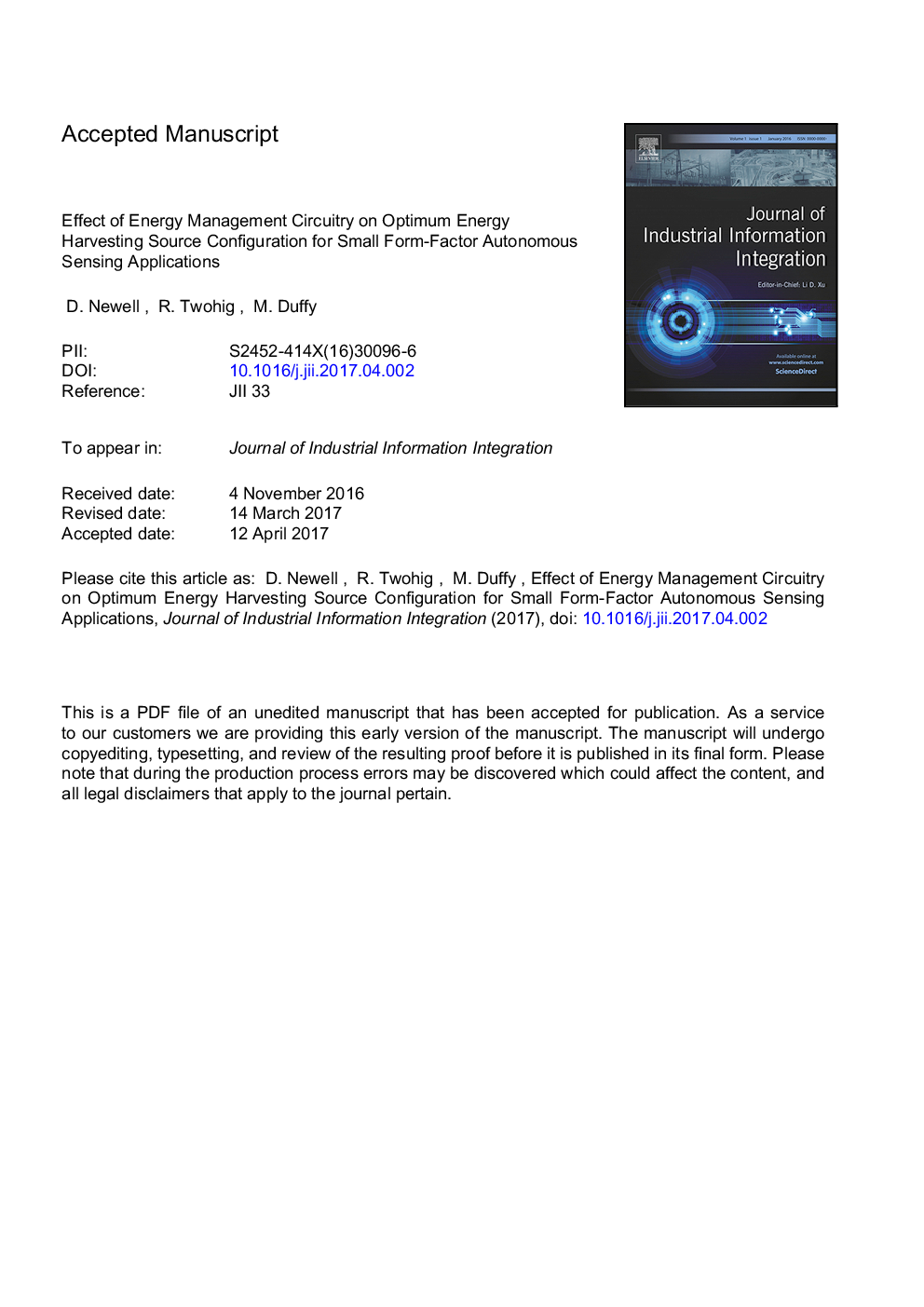| کد مقاله | کد نشریه | سال انتشار | مقاله انگلیسی | نسخه تمام متن |
|---|---|---|---|---|
| 10151531 | 1666130 | 2018 | 19 صفحه PDF | دانلود رایگان |
عنوان انگلیسی مقاله ISI
Effect of energy management circuitry on optimum energy harvesting source configuration for small form-factor autonomous sensing applications
ترجمه فارسی عنوان
تاثیر مدیریت انرژی بر پیکربندی منبع انرژی بهینه برای کاربردهای سنجش خودکار مستقل
دانلود مقاله + سفارش ترجمه
دانلود مقاله ISI انگلیسی
رایگان برای ایرانیان
موضوعات مرتبط
مهندسی و علوم پایه
مهندسی کامپیوتر
سیستم های اطلاعاتی
چکیده انگلیسی
The purpose of this paper is to investigate methods for improving power delivery from low-voltage, low-power energy harvesting sources, such as small form-factor dye-sensitised solar cells (DSSCs) as used in autonomous wireless sensing applications in buildings and homes. Energy harvesting powered wireless sensors enable existing and new structures to comply with Industry 4.0 and become smart buildings. Due to the size constraints of wireless sensor systems and the inherently low-power levels generated by energy harvesting sources, available power is limited and therefore the efficiency of power conversion and energy management circuitry connected between the source and output load has a significant impact on output power delivery. Most research to date focuses on improving the efficiency of individual components of such systems, without considering the impact of one stage on the others. In this paper, the potential of varying energy harvesting source configuration in combination with power converter operation to improve overall power delivery is investigated, where it is shown that by connecting sections of a DSSC in series rather than as a single cell, higher power conversion efficiency and therefore power delivery is achieved. Limitations to varying cell configurations and low-power DC-DC topologies are illustrated in order to demonstrate the scope of solutions available for small-sized, low-power, energy harvesting sources. It is shown that 8% improvement in overall power delivery is achieved for series vs. single cell connections within a fixed module area. This will translate into increased wireless sensor functionality and range, thereby furthering the development of the Industrial Internet of Things in buildings and homes.
ناشر
Database: Elsevier - ScienceDirect (ساینس دایرکت)
Journal: Journal of Industrial Information Integration - Volume 11, September 2018, Pages 1-10
Journal: Journal of Industrial Information Integration - Volume 11, September 2018, Pages 1-10
نویسندگان
D. Newell, R. Twohig, M. Duffy,
